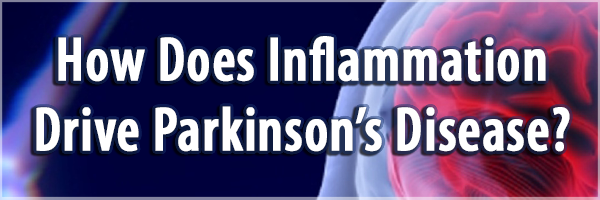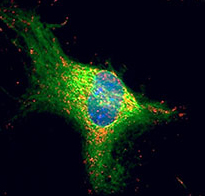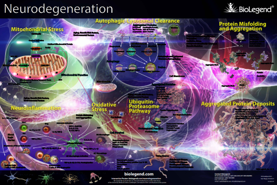 |
| It has recently become clear that inflammation is more than just a consequence of Parkinson’s disease – it may be the root source of neuronal loss. Whether inflammation causes or is a result of α-Synuclein accumulation, anti-inflammatory treatment could be an effective strategy for preventing neurodegeneration. Characterize the inflammatory mechanisms that underlie neuronal pathology with BioLegend’s solutions for Parkinson’s disease research. |
 |
 |
| α-Synuclein is expressed principally in the central nervous system (CNS), but is also found at low concentrations in a variety of tissues. Unravel immune-neural relationships by pairing your inflammation data with measurements of α-Synuclein concentrations from our LEGEND MAX™ α-Synuclein ELISA Kit – which was developed in collaboration with the Michael J. Fox Foundation, and has a 5-star quality review. Learn how it was used in a recent study to characterize cerebrospinal fluid samples from the Parkinson’s Progression Markers Initiative. |  Standard curve showing sensitivity of the LEGEND MAX™ α-Synuclein ELISA Kit Standard curve showing sensitivity of the LEGEND MAX™ α-Synuclein ELISA Kit |
 |
 Primary mouse astrocytes stained for IHC with anti-GFAP (SMI-25) Alexa Fluor® 488 (green), purified anti-VDAC1 (N152B/23) with an Alexa Fluor® 594 secondary antibody (red), and DAPI (blue). |
Astrocytes and microglia are abundant non-neuron cells in the CNS that play important roles in Parkinson’s disease. Astrocytes in diseased brain tissue harbor α-Synuclein inclusions, and microglia secrete pro-inflammatory molecules that contribute to neurodegeneration. Isolation and characterization of these cell types from brain tissues can be challenging – learn how with our detailed technical protocols for astrocyte and microglia research. |
 |
| Our neurodegeneration poster summarizes key pathways of neuronal disease, like protein aggregation and neuroinflammation. In addition to being a handy resource, it provides excellent décor for your lab or office. Request a copy or download here.
|
 |
*Any references to promotions on this page may not be valid at this time. View our promotions page for the most up-to-date promotions.
 Login/Register
Login/Register 








Follow Us